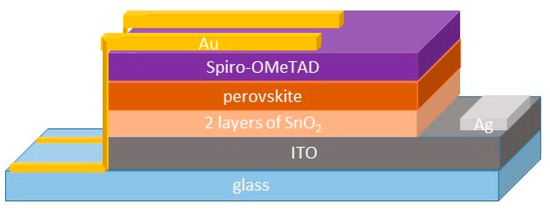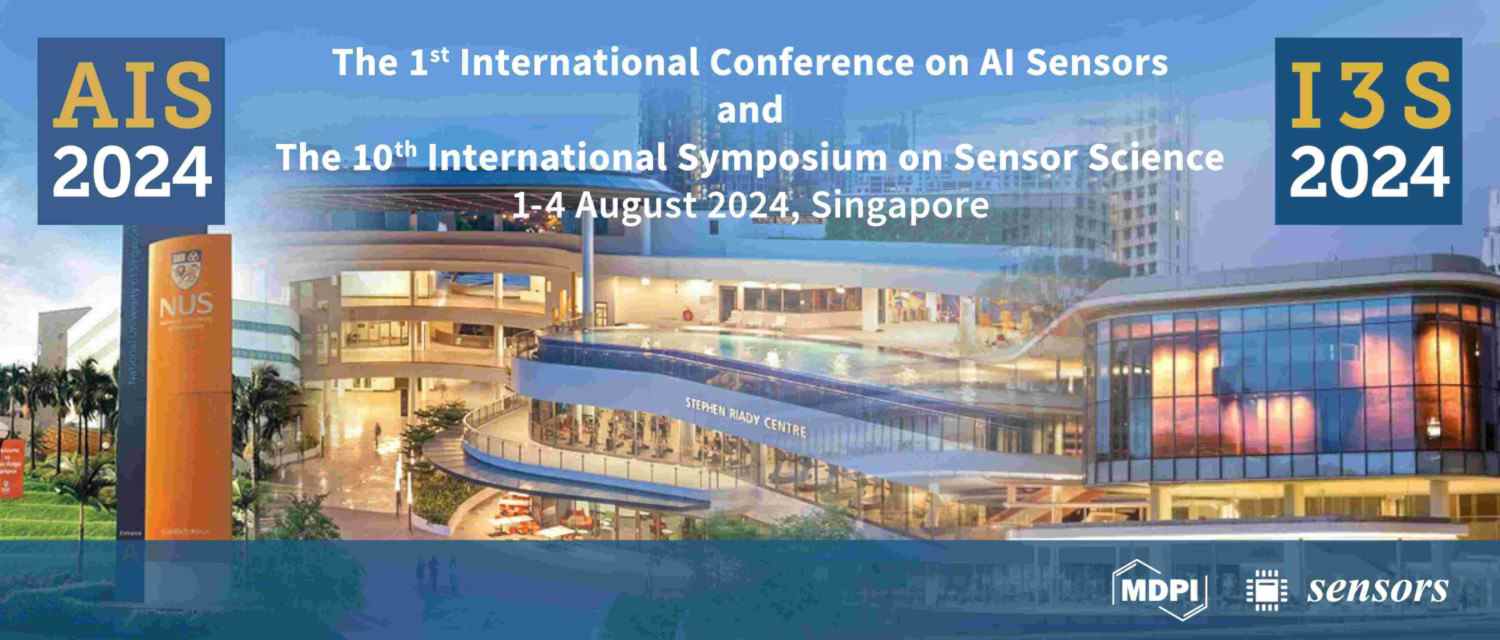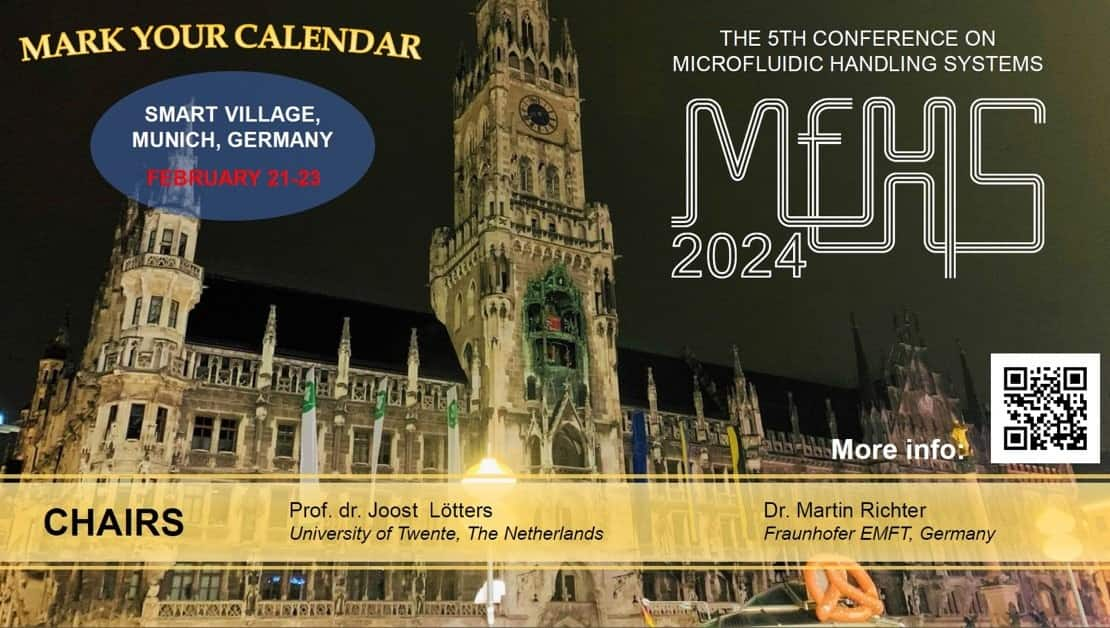-
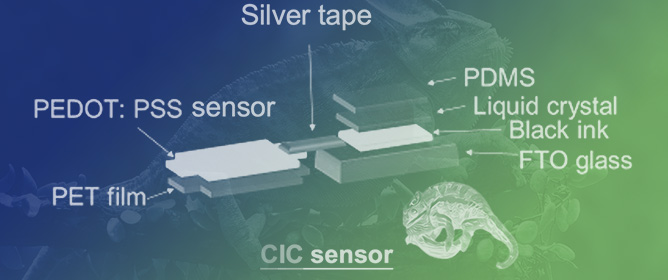 Chameleon-Inspired Colorimetric Sensors for Real-Time Detections with Humidity
Chameleon-Inspired Colorimetric Sensors for Real-Time Detections with Humidity -
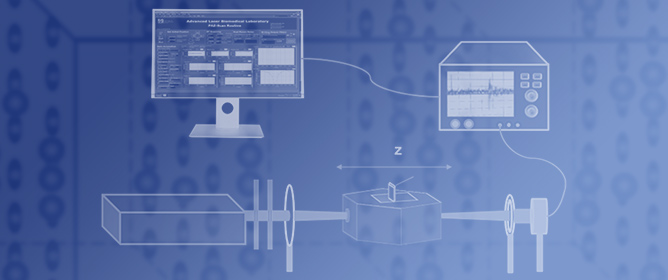 Polarization Z-Scan Studies Revealing Plasmon Coupling Enhancement Due to Dimer Formation of Gold Nanoparticles in Nematic Liquid Crystals
Polarization Z-Scan Studies Revealing Plasmon Coupling Enhancement Due to Dimer Formation of Gold Nanoparticles in Nematic Liquid Crystals -
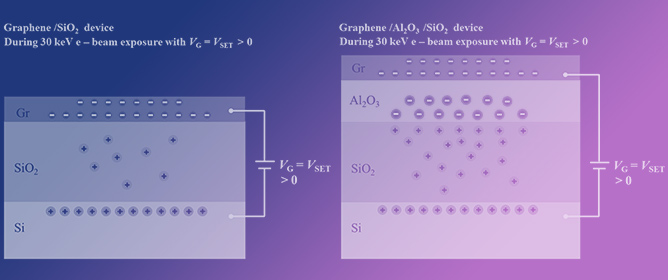 Controllable Carrier Doping in Two-Dimensional Materials Using Electron-Beam Irradiation and Scalable Oxide Dielectrics
Controllable Carrier Doping in Two-Dimensional Materials Using Electron-Beam Irradiation and Scalable Oxide Dielectrics -
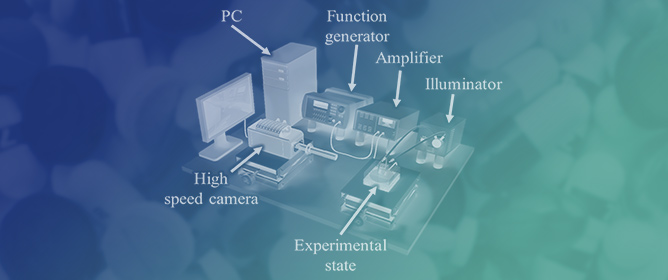 Acoustic Bubble and Magnetic Actuation-Based Microrobot for Enhanced Multiphase Drug Delivery Efficiency
Acoustic Bubble and Magnetic Actuation-Based Microrobot for Enhanced Multiphase Drug Delivery Efficiency
Journal Description
Micromachines
Micromachines
is a peer-reviewed, open access journal on the science and technology of small structures, devices and systems, published monthly online by MDPI.
- Open Access— free for readers, with article processing charges (APC) paid by authors or their institutions.
- High Visibility: indexed within Scopus, SCIE (Web of Science), PubMed, PMC, Ei Compendex, dblp, and other databases.
- Journal Rank: JCR - Q2 (Chemistry, Analytical) / CiteScore - Q2 (Mechanical Engineering)
- Rapid Publication: manuscripts are peer-reviewed and a first decision is provided to authors approximately 16.1 days after submission; acceptance to publication is undertaken in 1.9 days (median values for papers published in this journal in the second half of 2023).
- Recognition of Reviewers: reviewers who provide timely, thorough peer-review reports receive vouchers entitling them to a discount on the APC of their next publication in any MDPI journal, in appreciation of the work done.
- Testimonials: See what our editors and authors say about Micromachines.
Impact Factor:
3.4 (2022);
5-Year Impact Factor:
3.3 (2022)
Latest Articles
Green Anisole as Antisolvent in Planar Triple-Cation Perovskite Solar Cells with Varying Cesium Concentrations
Micromachines 2024, 15(1), 136; https://doi.org/10.3390/mi15010136 - 15 Jan 2024
Abstract
The feasibility of replacing toxic chlorobenzene antisolvents with environmentally friendly anisole in the fabrication of planar triple-cation perovskite solar cells was explored here. The successful integration of anisole not only ensures comparable device performance but also contributes to the development of more sustainable
[...] Read more.
The feasibility of replacing toxic chlorobenzene antisolvents with environmentally friendly anisole in the fabrication of planar triple-cation perovskite solar cells was explored here. The successful integration of anisole not only ensures comparable device performance but also contributes to the development of more sustainable and green fabrication processes for next-generation photovoltaic technologies. Nevertheless, to ensure the possibility of achieving well-functioning unencapsulated devices whose working operation depends on outdoor atmospheric conditions, we found that adjusting the cesium concentrations in the perovskite layers enabled the electrical characterization of efficient devices even under high relative humidity conditions (more than 40%). We found that 10% of CsI in the precursor solution will make devices with low hysteresis indexes and sustained performance stability over a 90-day period both with cholorobenzene and anisole antisolvent. These results further confirm that green anisole can replace chlorobenzene as an antisolvent.
Full article
(This article belongs to the Special Issue Nanostructures for Application in Electronics and Renewable Energy Sources)
►
Show Figures
Open AccessArticle
Ultra-High Frequency Surface Acoustic Wave Sensors for Temperature Detection
by
, , , , , , , , and
Micromachines 2024, 15(1), 135; https://doi.org/10.3390/mi15010135 - 15 Jan 2024
Abstract
Highly sensitive surface acoustic wave (SAW) sensors have recently been recognized as a promising tool for various industrial and medical applications. However, existing SAW sensors generally suffer from a complex design, large size, and poor robustness. In this paper, we develop a simple
[...] Read more.
Highly sensitive surface acoustic wave (SAW) sensors have recently been recognized as a promising tool for various industrial and medical applications. However, existing SAW sensors generally suffer from a complex design, large size, and poor robustness. In this paper, we develop a simple and stable delay line ultra-high frequency (UHF) SAW sensor for highly sensitive detection of temperature. A Z-shaped delay line is specially designed on the piezoelectric substrate to improve the sensitivity and reduce the substrate size. Herein, the optimum design parameters of extremely short-pitch interdigital transducers (IDTs) are given by numerical simulations. The extremely short pitch gives the SAW sensor ultra-high operating frequency and consequently ultra-high sensitivity. Several experiments are conducted to demonstrate that the sensitivity of the Z-shaped SAW delay line sensor can reach up to 116.685°/°C for temperature detection. The results show that the sensor is an attractive alternative to current SAW sensing platforms in many applications.
Full article
(This article belongs to the Special Issue Novel Surface and Bulk Acoustic Wave Devices)
►▼
Show Figures
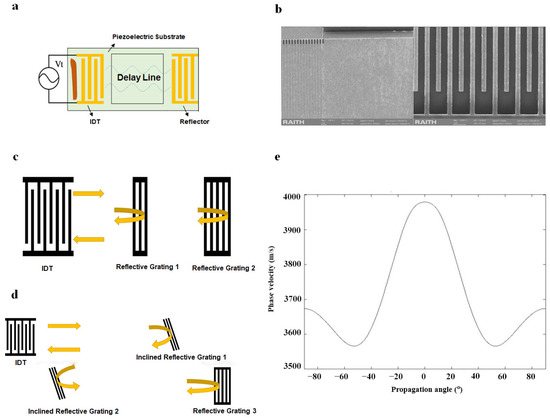
Figure 1
Open AccessArticle
Modeling for High-Frequency Spurious Responses in Incredible High-Performance Surface Acoustic Wave Devices
by
, , , , , , and
Micromachines 2024, 15(1), 134; https://doi.org/10.3390/mi15010134 - 15 Jan 2024
Abstract
►▼
Show Figures
To ensure that surface acoustic wave (SAW) filters fulfill the requirements of Carrier Aggregation (CA) applications, the development of modeling tools that can forecast and simulate high-frequency spurious responses has been necessary. This paper presents an advanced methodology for extending the coupling-of-modes (COM)
[...] Read more.
To ensure that surface acoustic wave (SAW) filters fulfill the requirements of Carrier Aggregation (CA) applications, the development of modeling tools that can forecast and simulate high-frequency spurious responses has been necessary. This paper presents an advanced methodology for extending the coupling-of-modes (COM) model to obtain precise modeling of the high-frequency spurious responses of incredible high-performance surface acoustic wave (I.H.P. SAW) devices. The extended COM (ECOM) model is derived by modifying the conventional COM model and extending it accordingly. The parameters used in this model are determined through numerical fitting. For validation, firstly, the ECOM model is applied to a one-port synchronous I.H.P. SAW resonator, and the simulation and measurement results match. Then, the structural parameters of the ECOM model are varied, and the accuracy of the model after the structural parameters are varied is verified. It is demonstrated that this model can be applied to the design work of SAW filters. Finally, the ECOM model is applied to the design of the I.H.P. SAW filter based on a 42°YX-LiTaO3 (LT)/SiO2/AlN/Si structure. By using this method, the I.H.P. SAW filter’s high-frequency spurious response can be predicted more accurately.
Full article
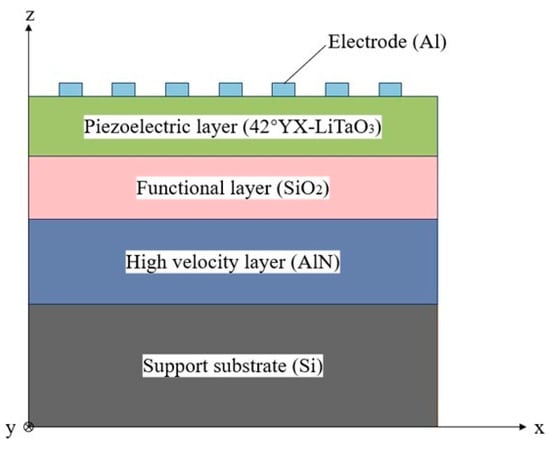
Figure 1
Open AccessArticle
A 2.8 kV Breakdown Voltage α-Ga2O3 MOSFET with Hybrid Schottky Drain Contact
by
, , , , , and
Micromachines 2024, 15(1), 133; https://doi.org/10.3390/mi15010133 - 14 Jan 2024
Abstract
Among various polymorphic phases of gallium oxide (Ga2O3), α-phase Ga2O3 has clear advantages such as its heteroepitaxial growth as well as wide bandgap, which is promising for use in power devices. In this work, we demonstrate
[...] Read more.
Among various polymorphic phases of gallium oxide (Ga2O3), α-phase Ga2O3 has clear advantages such as its heteroepitaxial growth as well as wide bandgap, which is promising for use in power devices. In this work, we demonstrate α-Ga2O3 MOSFETs with hybrid Schottky drain (HSD) contact, comprising both Ohmic and Schottky electrode regions. In comparison with conventional Ohmic drain (OD) contact, a lower on-resistance (Ron) of 2.1 kΩ mm is achieved for variable channel lengths. Physics-based TCAD simulation is performed to validate the turn-on characteristics of the Schottky electrode region and the improved Ron. Electric-field analysis in the off-state is conducted for both the OD and HSD devices. Furthermore, a record breakdown voltage (BV) of 2.8 kV is achieved, which is superior to the 1.7 kV of the compared OD device. Our results show that the proposed HSD contact with a further optimized design can be a promising drain electrode scheme for α-Ga2O3 power MOSFETs.
Full article
(This article belongs to the Special Issue Power Semiconductor Devices and Applications, 2nd Edition)
►▼
Show Figures
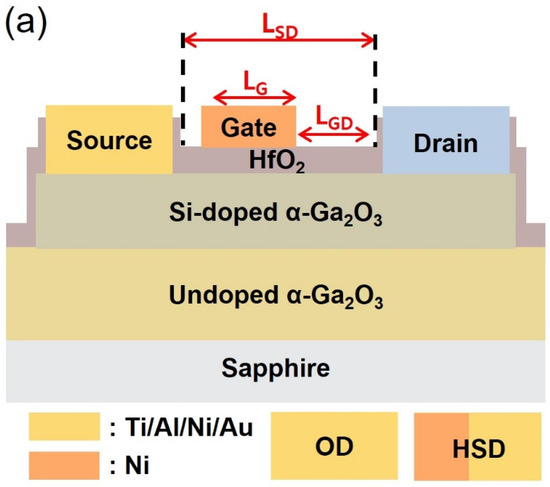
Figure 1
Open AccessArticle
Low Profile Triangle-Shaped Piezoelectric Rotary Motor
Micromachines 2024, 15(1), 132; https://doi.org/10.3390/mi15010132 - 13 Jan 2024
Abstract
In this paper, we present research on a novel low-profile piezoelectric rotary motor with a triangle-shaped stator. The stator of the motor comprises three interconnected piezoelectric bimorph plates forming an equilateral triangle. Bimorph plates consist of a passive layer fabricated from stainless steel
[...] Read more.
In this paper, we present research on a novel low-profile piezoelectric rotary motor with a triangle-shaped stator. The stator of the motor comprises three interconnected piezoelectric bimorph plates forming an equilateral triangle. Bimorph plates consist of a passive layer fabricated from stainless steel and four piezo ceramic plates glued to the upper and lower surfaces. Furthermore, spherical contacts are positioned on each bimorph plate at an offset from the plate’s center. Vibrations from the stator are induced by a single sawtooth-type electric signal while the frequency of the excitation signal is close to the resonant frequency of the second out-of-plane bending mode of the bimorph plate. The offset of the spherical contacts allows for a half-elliptical motion trajectory. By contrast, the forward and backward motion velocities of the contacts differ due to the asymmetrical excitation signal. The inertial principle of the motor and the angular motion of the rotor were obtained. Numerical and experimental investigations showed that the motor operates at a frequency of 21.18 kHz and achieves a maximum angular speed of 118 RPM at a voltage of 200 Vp-p. Additionally, an output torque of 18.3 mN·mm was obtained under the same voltage. The ratio between motor torque and weight is 36 mN·mm/g, while the ratio of angular speed and weight is 28.09 RPM/g.
Full article
(This article belongs to the Special Issue Recent Advance in Piezoelectric Actuators and Motors 2023)
►▼
Show Figures
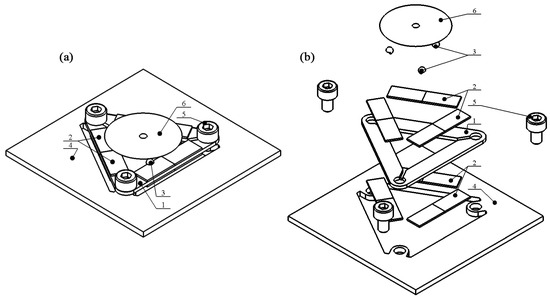
Figure 1
Open AccessArticle
Scaling a Hydraulic Motor for Minimally Invasive Medical Devices
Micromachines 2024, 15(1), 131; https://doi.org/10.3390/mi15010131 - 12 Jan 2024
Abstract
Aligned with the medical device industry’s trend of miniaturization, academic and commercial researchers are constantly attempting to reduce device sizes. Many applications require miniature actuators (2 mm range) to perform mechanical work; however, biocompatible micromotors are not readily available. To that end, a
[...] Read more.
Aligned with the medical device industry’s trend of miniaturization, academic and commercial researchers are constantly attempting to reduce device sizes. Many applications require miniature actuators (2 mm range) to perform mechanical work; however, biocompatible micromotors are not readily available. To that end, a hydraulic motor-driven cutting module that aims to combine cutting and drug delivery is presented. The hydraulic motor prototype developed has an outside diameter (OD) of ~4 mm (twice the target size) and a 1 mm drive shaft to attach a cutter. Four different designs were explored and fabricated using additive manufacturing. The benchtop experimental data of the prototypes are presented herein. For the prototype motor with fluid inlet perpendicular to the blades, the average angular velocity was 10,593 RPM at a flowrate of 3.6 mL/s and 42,597 RPM at 10.1 mL/s. This design was numerically modeled using 3D-transient simulations in ANSYS CFX (version 2022 R2) to determine the performance characteristics and the internal resistance of the motor. Simplified mathematical models were also used to compute and compare the peak torque with the simulation estimates. The viability of current design represents a crucial milestone in scaling the hydraulic motor to a 2 mm OD to power a microcutter.
Full article
(This article belongs to the Special Issue Micromachines Research and Development in North America)
►▼
Show Figures
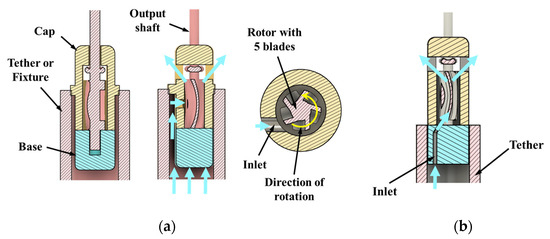
Figure 1
Open AccessArticle
Development of a Microheater with a Large Heating Area and Low Thermal Stress in the Heating Area
by
, , , , , , , and
Micromachines 2024, 15(1), 130; https://doi.org/10.3390/mi15010130 - 12 Jan 2024
Abstract
In this paper, a microheater that can absorb thermal stress and has a large heating area is demonstrated by optimizing the structure and process of the microheater. Four symmetrically distributed elongated support beam structures were machined around the microheater via deep silicon etching.
[...] Read more.
In this paper, a microheater that can absorb thermal stress and has a large heating area is demonstrated by optimizing the structure and process of the microheater. Four symmetrically distributed elongated support beam structures were machined around the microheater via deep silicon etching. This design efficiently mitigates the deformation of the heated region caused by thermal expansion and enhances the structural stability of the microheater. The updated microheater no longer converts the work area into a thin film; instead, it creates a stable heating platform that can uniformly heat a work area measuring 10 × 10 mm2. The microheater is verified to have high temperature uniformity and structural stability in finite element simulation. Finally, thorough investigations of electrical–thermal–structural characterization were conducted. The test findings show that the new microheater can achieve 350 °C with a power consumption of 6 W and a thermal reaction time of 22 s. A scan of its whole plane reveals that the surface of the working area of the new microheater is flat and does not distort in response to variations in temperature, offering good structural stability.
Full article
(This article belongs to the Special Issue Micro- and Nano-Systems for Manipulation, Actuation and Sensing, 2nd Edition)
►▼
Show Figures
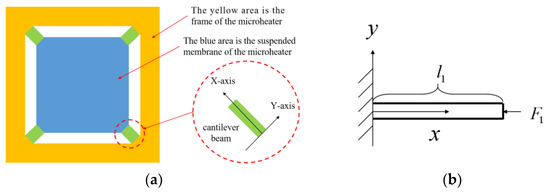
Figure 1
Open AccessArticle
Accelerated Computational Fluid Dynamics Simulations of Microfluidic Devices by Exploiting Higher Levels of Abstraction
by
and
Micromachines 2024, 15(1), 129; https://doi.org/10.3390/mi15010129 - 12 Jan 2024
Abstract
The design of microfluidic devices is a cumbersome and tedious process that can be significantly improved by simulation. Methods based on Computational Fluid Dynamics (CFD) are considered state-of-the-art, but require extensive compute time—oftentimes limiting the size of microfluidic devices that can be simulated.
[...] Read more.
The design of microfluidic devices is a cumbersome and tedious process that can be significantly improved by simulation. Methods based on Computational Fluid Dynamics (CFD) are considered state-of-the-art, but require extensive compute time—oftentimes limiting the size of microfluidic devices that can be simulated. Simulation methods that abstract the underlying physics on a higher level generally provide results instantly, but the fidelity of these methods is usually worse. In this work, a simulation method that accelerates CFD simulations by exploiting simulation methods on higher levels of abstraction is proposed. Case studies confirm that the proposed method accelerates CFD simulations by multiple factors (often several orders of magnitude) while maintaining the fidelity of CFD simulations.
Full article
(This article belongs to the Special Issue Computational Tools and AI in Design and Micro-Manufacturing)
►▼
Show Figures
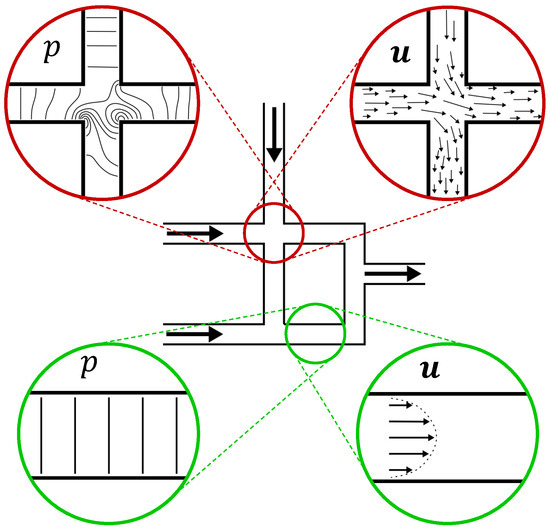
Figure 1
Open AccessArticle
Lightweight and High-Stiffness Metal Optical Systems Based on Additive Manufacturing
Micromachines 2024, 15(1), 128; https://doi.org/10.3390/mi15010128 - 12 Jan 2024
Abstract
To build a long-wave infrared catadioptric optical system for deep space low-temperature target detection with a lightweight and wide field of view, this work conducted a study that encompasses a local cooling optical system, topology optimization-based metal mirror design, and additive manufacturing. First,
[...] Read more.
To build a long-wave infrared catadioptric optical system for deep space low-temperature target detection with a lightweight and wide field of view, this work conducted a study that encompasses a local cooling optical system, topology optimization-based metal mirror design, and additive manufacturing. First, a compact catadioptric optical system with local cooling was designed. This system features a 55 mm aperture, a 110 mm focal length, and a 4-degree by 4-degree field of view. Secondly, we applied the principles of topology optimization to design the primary mirror assembly, the secondary mirror assembly, and the connecting baffle. The third and fourth modes achieved a resonance frequency of 1213.7 Hz. Then, we manufactured the mirror assemblies using additive manufacturing and single-point diamond turning, followed by the centering assembly method to complete the optical assembly. Lastly, we conducted performance testing on the system, with the test results revealing that the modulation transfer function (MTF) curves of the optical system reached the diffraction limit across the entire field of view. Remarkably, the system’s weight was reduced to a mere 96.04 g. The use of additive manufacturing proves to be an effective means of enhancing optical system performance.
Full article
(This article belongs to the Special Issue 3D Printing Technology and Its Applications)
►▼
Show Figures
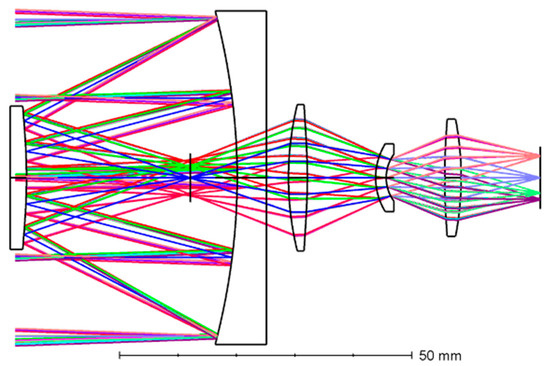
Figure 1
Open AccessReview
The Understanding and Compact Modeling of Reliability in Modern Metal–Oxide–Semiconductor Field-Effect Transistors: From Single-Mode to Mixed-Mode Mechanisms
Micromachines 2024, 15(1), 127; https://doi.org/10.3390/mi15010127 - 12 Jan 2024
Abstract
With the technological scaling of metal–oxide–semiconductor field-effect transistors (MOSFETs) and the scarcity of circuit design margins, the characteristics of device reliability have garnered widespread attention. Traditional single-mode reliability mechanisms and modeling are less sufficient to meet the demands of resilient circuit designs. Mixed-mode
[...] Read more.
With the technological scaling of metal–oxide–semiconductor field-effect transistors (MOSFETs) and the scarcity of circuit design margins, the characteristics of device reliability have garnered widespread attention. Traditional single-mode reliability mechanisms and modeling are less sufficient to meet the demands of resilient circuit designs. Mixed-mode reliability mechanisms and modeling have become a focal point of future designs for reliability. This paper reviews the mechanisms and compact aging models of mixed-mode reliability. The mechanism and modeling method of mixed-mode reliability are discussed, including hot carrier degradation (HCD) with self-heating effect, mixed-mode aging of HCD and Bias Temperature Instability (BTI), off-state degradation (OSD), on-state time-dependent dielectric breakdown (TDDB), and metal electromigration (EM). The impact of alternating HCD-BTI stress conditions is also discussed. The results indicate that single-mode reliability analysis is insufficient for predicting the lifetime of advanced technology and circuits and provides guidance for future mixed-mode reliability analysis and modeling.
Full article
(This article belongs to the Special Issue Reliability Issues in Advanced Transistor Nodes)
►▼
Show Figures
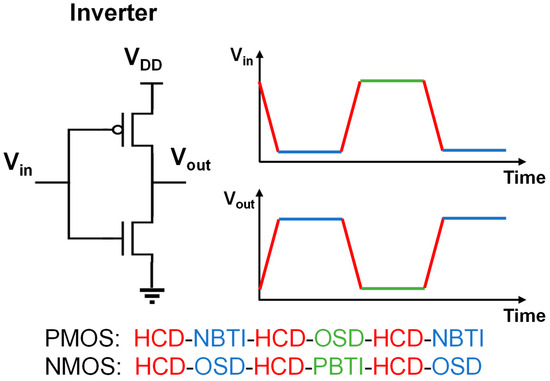
Figure 1
Open AccessCommunication
A Quad-Band Highly Selective Frequency Selective Surface with Ultra-Wideband Rejection
Micromachines 2024, 15(1), 126; https://doi.org/10.3390/mi15010126 - 11 Jan 2024
Abstract
In this paper, a highly selective quad-band frequency selective surface (FSS) with ultra-wideband rejection is presented. The proposed FSS structure was developed by cascading five metallic layers by three thin dielectric substrates. The five metallic layers are composed of two bent slot layers,
[...] Read more.
In this paper, a highly selective quad-band frequency selective surface (FSS) with ultra-wideband rejection is presented. The proposed FSS structure was developed by cascading five metallic layers by three thin dielectric substrates. The five metallic layers are composed of two bent slot layers, two metallic square rings, and a metal patch. The dimensions of the unit cell are 0.13
(This article belongs to the Section D:Materials and Processing)
►▼
Show Figures
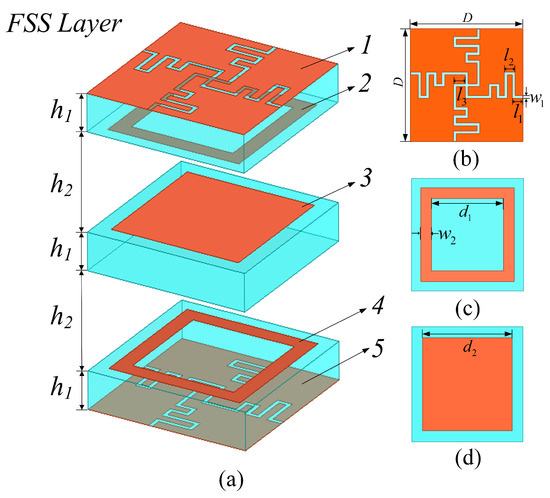
Figure 1
Open AccessArticle
Influence of Active-to-Passive Ratio on the Deformation in Circular Dielectric Elastomer Actuators
Micromachines 2024, 15(1), 125; https://doi.org/10.3390/mi15010125 - 11 Jan 2024
Abstract
To further improve the performance of dielectric elastomer actuaotrs (DEAs), the development of novel elastomers with enhanced electro-mechanical properties is focal for the advancement of the technology. Hence, reliable techniques to assess their electro-mechanical performance are necessary. Characterization of the actuator materials is
[...] Read more.
To further improve the performance of dielectric elastomer actuaotrs (DEAs), the development of novel elastomers with enhanced electro-mechanical properties is focal for the advancement of the technology. Hence, reliable techniques to assess their electro-mechanical performance are necessary. Characterization of the actuator materials is often achieved by fabricating circular DEAs with the pre-stretch of the membrane fixed by a stiff frame. Because of this set-up, the electrode size relative to the carrier frame’s dimension has an impact on actuator strain and displacement. To allow for comparable results across different studies, the influence of this effect needs to be quantified and taken into account. This paper presents an in-depth study of the active-to-passive ratio by proposing two simplified analytical models for circular DEA and comparing them. The first model is taking the hyperelastic material properties of the dielectric film into account while the second model is a linear elastic lumped parameter model based on the electro-mechanical analogy. Both models lie in good agreement and show a significant linear impact of the radial active-to-passive ratio on the electro-active strain and a resulting maximum of displacement around 50% radial coverage ratio. These findings are validated by experiments with actuators fabricated using silicone membranes. It is shown that the electrode size is not only an important parameter in the experimental design, but in some cases of higher significance for the accuracy of analytical models than the hyperelastic properties of the material. Furthermore, it could be shown that a radial coverage ratio of around 50% is desirable when measuring displacement as it maximizes the displacement and lowers the impact of deviations in electrode sizes due to fabrication errors.
Full article
Open AccessArticle
Design of a Micro-Electro Mechanical System Quad Mass Gyroscope with Compliant Mechanical Amplification
Micromachines 2024, 15(1), 124; https://doi.org/10.3390/mi15010124 - 11 Jan 2024
Abstract
In this work, a novel mechanical amplification structure for a MEMS vibratory gyroscope is proposed with the aim of improving their sensitivity. The scheme is implemented using a system of micromachined V-shaped springs as a deflection amplifying mechanism. The effectiveness of the mechanism
[...] Read more.
In this work, a novel mechanical amplification structure for a MEMS vibratory gyroscope is proposed with the aim of improving their sensitivity. The scheme is implemented using a system of micromachined V-shaped springs as a deflection amplifying mechanism. The effectiveness of the mechanism is first demonstrated for a capacitive fully decoupled quad mass gyroscope. A proof of concept vertical-axis mechanically amplified gyroscope with an amplification factor of 365% has been designed, simulated and fabricated, and results from its evaluation are presented in this paper. Experimental results show that the natural frequency of the gyroscope is 11.67 KHz, and the full scale measurement range is up to ±400°/s with a maximum nonlinearity of 54.69 ppm. The bias stability is 44.53°/h. The experiment results show that this quad mass gyroscope’s performance is a very potential new way of reaching the navigation grade in the future.
Full article
(This article belongs to the Special Issue MEMS/NEMS Devices and Applications, 2nd Edition)
►▼
Show Figures
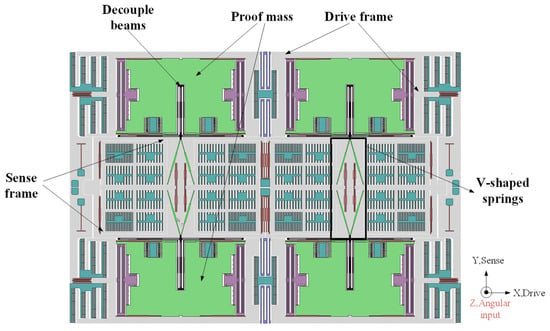
Figure 1
Open AccessArticle
The Printability, Microstructure, and Mechanical Properties of Fe80−xMnxCo10Cr10 High-Entropy Alloys Fabricated by Laser Powder Bed Fusion Additive Manufacturing
by
, , , , , , , , and
Micromachines 2024, 15(1), 123; https://doi.org/10.3390/mi15010123 - 11 Jan 2024
Abstract
This work investigated the effect of Fe/Mn ratio on the microstructure and mechanical properties of non-equimolar Fe80−xMnxCo10Cr10 (x = 30% and 50%) high-entropy alloys (HEAs) fabricated by laser powder bed fusion (LPBF) additive manufacturing.
[...] Read more.
This work investigated the effect of Fe/Mn ratio on the microstructure and mechanical properties of non-equimolar Fe80−xMnxCo10Cr10 (x = 30% and 50%) high-entropy alloys (HEAs) fabricated by laser powder bed fusion (LPBF) additive manufacturing. Process optimization was conducted to achieve fully dense Fe30Mn50Co10Cr10 and Fe50Mn30Co10Cr10 HEAs using a volumetric energy density of 105.82 J·mm−3. The LPBF-printed Fe30Mn50Co10Cr10 HEA exhibited a single face-centered cubic (FCC) phase, while the Fe50Mn30Co10Cr10 HEA featured a hexagonal close-packed (HCP) phase within the FCC matrix. Notably, the fraction of HCP phase in the Fe50Mn30Co10Cr10 HEAs increased from 0.94 to 28.10%, with the deformation strain ranging from 0 to 20%. The single-phase Fe30Mn50Co10Cr10 HEA demonstrated a remarkable combination of high yield strength (580.65 MPa) and elongation (32.5%), which surpassed those achieved in the FeMnCoCr HEA system. Comparatively, the dual-phase Fe50Mn30Co10Cr10 HEA exhibited inferior yield strength (487.60 MPa) and elongation (22.3%). However, it displayed superior ultimate tensile strength (744.90 MPa) compared to that in the Fe30Mn50Co10Cr10 HEA (687.70 MPa). The presence of FCC/HCP interfaces obtained in the Fe50Mn30Co10Cr10 HEA resulted in stress concentration and crack expansion, thereby leading to reduced ductility but enhanced resistance against grain slip deformation. Consequently, these interfaces facilitated an earlier attainment of yield limit point and contributed to increased ultimate tensile strength in the Fe50Mn30Co10Cr10 HEA. These findings provide valuable insights into the microstructure evolution and mechanical behavior of LPBF-printed metastable FeMnCoCr HEAs.
Full article
(This article belongs to the Special Issue Advanced Micro- and Nano-Manufacturing Technologies)
►▼
Show Figures
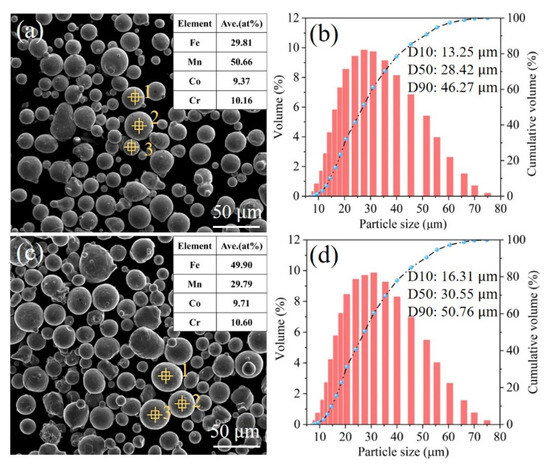
Figure 1
Open AccessArticle
Preparation and Properties of GO/ZnO/nHAp Composite Microsphere Bone Regeneration Material
by
, , , , , , , , and
Micromachines 2024, 15(1), 122; https://doi.org/10.3390/mi15010122 - 11 Jan 2024
Abstract
►▼
Show Figures
The purpose of this study is to explore the possibility of using graphene–zinc oxide–hydroxyapatite (GO/ZnO/nHAp) composite microspheres as bone regeneration materials by making use of the complementary advantages of nanocomposites, so as to provide reference for the clinical application of preventing and solving
[...] Read more.
The purpose of this study is to explore the possibility of using graphene–zinc oxide–hydroxyapatite (GO/ZnO/nHAp) composite microspheres as bone regeneration materials by making use of the complementary advantages of nanocomposites, so as to provide reference for the clinical application of preventing and solving bacterial infection after implantation of synthetic materials. Firstly, GO/ZnO composites and hydroxyapatite nanoparticles were synthesized using the hydrothermal method, and then GO/ZnO/nHAp composite microspheres were prepared via high-temperature sintering. The graphene–zinc oxide–calcium phosphate composite microspheres were characterized by X-ray diffraction (XRD), field emission scanning electron microscopy (FE-SEM), X-ray photoelectron spectroscopy (XPS), energy dispersion spectroscopy (EDS), water contact angle measurement, degradation and pH determination, and differential thermal analysis (DiamondTG/DTA). The biocompatibility, osteogenic activity, and antibacterial activity of GO/ZnO/nHAp composite microspheres were further studied. The results of the cell experiment and antibacterial experiment showed that 0.5% and 1% GO-ZnO-nHAp composite microspheres not only had good biocompatibility and osteogenic ability but also inhibited Escherichia coli and Staphylococcus aureus by more than 45% and 70%. Therefore, GO/ZnO/nHAp composite microspheres have good physical and chemical properties and show good osteogenic induction and antibacterial activity, and this material has the possibility of being used as a bone regeneration material.
Full article
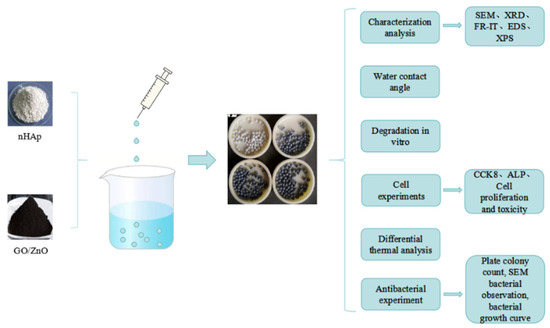
Figure 1
Open AccessArticle
Electromagnetic Susceptibility Analysis of the Operational Amplifier to Conducted EMI Injected through the Power Supply Port
by
, , , , , , , , , and
Micromachines 2024, 15(1), 121; https://doi.org/10.3390/mi15010121 - 11 Jan 2024
Abstract
Operational amplifiers (op-amps) are widely used in circuit systems. The increasing complexity of the power supply network has led to the susceptibility of the power supply port to electromagnetic interference (EMI) in circuit systems. Therefore, it is necessary to investigate the electromagnetic susceptibility
[...] Read more.
Operational amplifiers (op-amps) are widely used in circuit systems. The increasing complexity of the power supply network has led to the susceptibility of the power supply port to electromagnetic interference (EMI) in circuit systems. Therefore, it is necessary to investigate the electromagnetic susceptibility (EMS) of op-amps at the power supply port. In this paper, we assessed the effect of EMI on the operational performance of op-amps through the power supply port by a bulk current injection (BCI) method. Firstly, we conducted the continuous sine wave into the power supply port by a current injection probe and measured the change in the offset voltage under EMI. Secondly, we proposed a new method of conducted susceptibility and obtained the susceptibility threshold regularities of the op-amps at the power supply port under the interference of different waveform signals. Our study provided conclusive evidence that EMI reduced the reliability of the op-amp by affecting the offset voltage of op-amps and demonstrated that the sensitivity type of op-amps was peak-sensitive at the power supply port. This study contributed to a deep understanding of the EMS mechanism and guided the design of electromagnetic compatibility (EMC) of op-amps.
Full article
(This article belongs to the Special Issue State-of-the-Art CMOS and MEMS Devices)
►▼
Show Figures
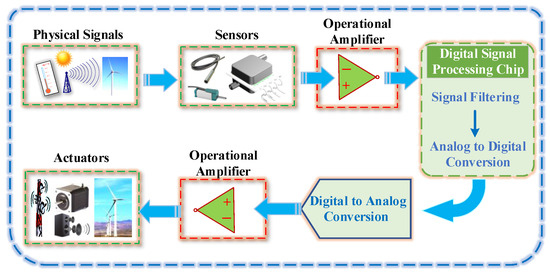
Figure 1
Open AccessEditorial
Editorial for the Special Issue on Microfluidic Device Fabrication and Cell Manipulation
Micromachines 2024, 15(1), 120; https://doi.org/10.3390/mi15010120 - 11 Jan 2024
Abstract
Microfluidic devices have been utilized for separation sciences, environmental sciences, food processing, drug delivery, bioimaging, diagnostics, and cell cultures [...]
Full article
(This article belongs to the Special Issue Microfluidic Device Fabrication and Cell Manipulation)
►▼
Show Figures
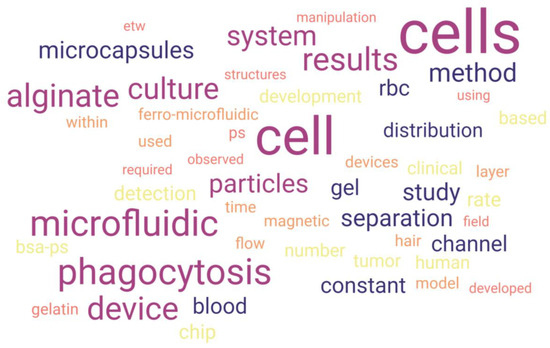
Figure 1
Open AccessArticle
Optimizing Optical Dielectrophoretic (ODEP) Performance: Position- and Size-Dependent Droplet Manipulation in an Open-Chamber Oil Medium
by
and
Micromachines 2024, 15(1), 119; https://doi.org/10.3390/mi15010119 - 11 Jan 2024
Abstract
An optimization study is presented to enhance optical dielectrophoretic (ODEP) performance for effective manipulation of an oil-immersed droplet in the floating electrode optoelectronic tweezers (FEOET) device. This study focuses on understanding how the droplet’s position and size, relative to light illumination, affect the
[...] Read more.
An optimization study is presented to enhance optical dielectrophoretic (ODEP) performance for effective manipulation of an oil-immersed droplet in the floating electrode optoelectronic tweezers (FEOET) device. This study focuses on understanding how the droplet’s position and size, relative to light illumination, affect the maximum ODEP force. Numerical simulations identified the characteristic length (Lc) of the electric field as a pivotal factor, representing the location of peak field strength. Utilizing 3D finite element simulations, the ODEP force is calculated through the Maxwell stress tensor by integrating the electric field strength over the droplet’s surface and then analyzed as a function of the droplet’s position and size normalized to Lc. Our findings reveal that the optimal position is xopt= Lc+ r, (with r being the droplet radius), while the optimal droplet size is ropt = 5Lc, maximizing light-induced field perturbation around the droplet. Experimental validations involving the tracking of droplet dynamics corroborated these findings. Especially, a droplet sized at r = 5Lc demonstrated the greatest optical actuation by performing the longest travel distance of 13.5 mm with its highest moving speed of 6.15 mm/s, when it was initially positioned at x0= Lc+ r = 6Lc from the light’s center. These results align well with our simulations, confirming the criticality of both the position (xopt) and size (ropt) for maximizing ODEP force. This study not only provides a deeper understanding of the position- and size-dependent parameters for effective droplet manipulation in FEOET systems, but also advances the development of low-cost, disposable, lab-on-a-chip (LOC) devices for multiplexed biological and biochemical analyses.
Full article
(This article belongs to the Special Issue Advances in Electrowetting Devices, Volume II)
►▼
Show Figures
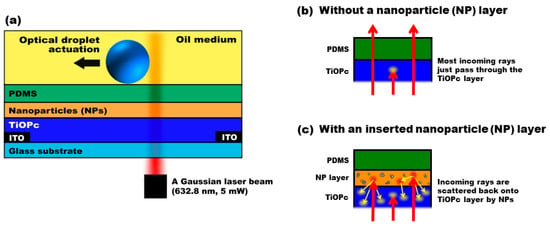
Figure 1
Open AccessArticle
A 3D-Printed Piezoelectric Microdevice for Human Energy Harvesting for Wearable Biosensors
Micromachines 2024, 15(1), 118; https://doi.org/10.3390/mi15010118 - 10 Jan 2024
Abstract
The human body is a source of multiple types of energy, such as mechanical, thermal and biochemical, which can be scavenged through appropriate technological means. Mechanical vibrations originating from contraction and expansion of the radial artery represent a reliable source of displacement to
[...] Read more.
The human body is a source of multiple types of energy, such as mechanical, thermal and biochemical, which can be scavenged through appropriate technological means. Mechanical vibrations originating from contraction and expansion of the radial artery represent a reliable source of displacement to be picked up and exploited by a harvester. The continuous monitoring of physiological biomarkers is an essential part of the timely and accurate diagnosis of a disease with subsequent medical treatment, and wearable biosensors are increasingly utilized for biomedical data acquisition of important biomarkers. However, they rely on batteries and their replacement introduces a discontinuity in measured signals, which could be critical for the patients and also causes discomfort. In the present work, the research into a novel 3D-printed wearable energy harvesting platform for scavenging energy from arterial pulsations via a piezoelectric material is described. An elastic thermoplastic polyurethane (TPU) film, which forms an air chamber between the skin and the piezoelectric disc electrode, was introduced to provide better adsorption to the skin, prevent damage to the piezoelectric disc and electrically isolate components in the platform from the human body. Computational fluid dynamics in the framework of COMSOL Multiphysics 6.1 software was employed to perform a series of coupled time-varying simulations of the interaction among a number of associated physical phenomena. The mathematical model of the harvester was investigated computationally, and quantification of the output energy and power parameters was used for comparisons. A prototype wearable platform enclosure was designed and manufactured using fused filament fabrication (FFF). The influence of the piezoelectric disc material and its diameter on the electrical output were studied and various geometrical parameters of the enclosure and the TPU film were optimized based on theoretical and empirical data. Physiological data, such as interdependency between the harvester skin fit and voltage output, were obtained.
Full article
(This article belongs to the Special Issue Piezoelectric Actuators and Sensors: Materials, Devices and Applications, 2nd Edition)
►▼
Show Figures
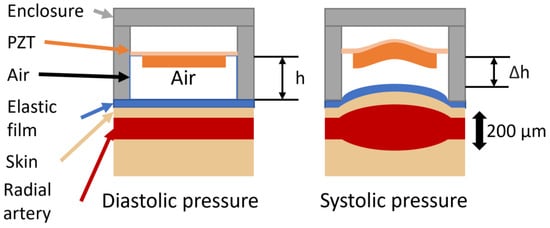
Figure 1
Open AccessArticle
Novel Ge-Based Plasma TFET with High Rectification Efficiency for 2.45 GHz Microwave Wireless Weak Energy Transmission
Micromachines 2024, 15(1), 117; https://doi.org/10.3390/mi15010117 - 10 Jan 2024
Abstract
►▼
Show Figures
The enhancement of rectification efficiency in 2.45 GHz microwave wireless weak energy transmission systems is centred on rectifier device selection. The overall rectification efficiency of traditional rectifier devices is low in weak energy density situations, failing to fulfil the commercial requirements of this
[...] Read more.
The enhancement of rectification efficiency in 2.45 GHz microwave wireless weak energy transmission systems is centred on rectifier device selection. The overall rectification efficiency of traditional rectifier devices is low in weak energy density situations, failing to fulfil the commercial requirements of this region. The subthreshold swing of the emerging device TFET exceeds 60 mV/dec, which has the advantages of a large open-state current and a small off-state current in the corresponding region of the weak energy density. In view of this, this paper designs a double-gate plasma rectifier TFET with an embedded n+ heavily doped layer on the basis of a PNPN-structured TFET, where the device is simulated with the MixedMode module of Silvaco TCAD 2018, the rectification efficiency at −10 dBm is 44.12%, which is 10.61% higher than that of the PNPN-TFET, and the efficiency in the weak energy density region is generally 10% or more than that of commercial HSMS devices, showing obvious rectification advantages.
Full article
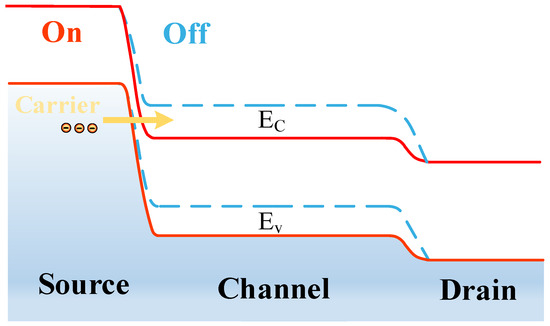
Figure 1

Journal Menu
► ▼ Journal Menu-
- Micromachines Home
- Aims & Scope
- Editorial Board
- Reviewer Board
- Topical Advisory Panel
- Instructions for Authors
- Special Issues
- Topics
- Sections & Collections
- Article Processing Charge
- Indexing & Archiving
- Editor’s Choice Articles
- Most Cited & Viewed
- Journal Statistics
- Journal History
- Journal Awards
- Conferences
- Editorial Office
Journal Browser
► ▼ Journal BrowserHighly Accessed Articles
Latest Books
E-Mail Alert
News
Topics
Topic in
Applied Sciences, Computers, Electronics, Micromachines, Sustainability
Innovation of Applied System
Topic Editors: Sheng-Joue Young, Shoou-Jinn Chang, Liang-Wen JiDeadline: 31 January 2024
Topic in
Applied Sciences, Fibers, Micromachines, Molecules, Photonics
Recent Advances in Nonlinear Optics and Nonlinear Optical Materials
Topic Editors: You Wang, Jiyong Yao, Zheng Xie, Yan FengDeadline: 1 April 2024
Topic in
Bioengineering, JMMP, Materials, Micromachines, Polymers
Advances in Filament Engineering for Biomaterials
Topic Editors: Ming-Wei Chang, Zeeshan Ahmad, Hui-Min David WangDeadline: 30 June 2024
Topic in
Chemistry, Materials, Micromachines, Molecules, Photonics
Materials, Structure Designs and Device Fabrications for Highly Efficient/Long Lifetime Organic Light-Emitting Diodes
Topic Editors: Ping Chen, Jwo-Huei JouDeadline: 31 December 2024

Conferences
Special Issues
Special Issue in
Micromachines
Quantum Photonics: Development and Applications
Guest Editor: Gonzalo CarvachoDeadline: 20 January 2024
Special Issue in
Micromachines
SiC Applications outside Power Electronic Devices
Guest Editors: Alberto Roncaglia, Francesco La ViaDeadline: 31 January 2024
Special Issue in
Micromachines
Piezoelectric MEMS/NEMS—Materials, Devices, and Applications, Volume II
Guest Editor: Wei LiDeadline: 15 February 2024
Special Issue in
Micromachines
MEMS Sensors: Past, Present and Future
Guest Editors: Liangcheng Tu, Wenjie WuDeadline: 28 February 2024
Topical Collections
Topical Collection in
Micromachines
Micromixers: Analysis, Design and Fabrication
Collection Editor: Kwang-Yong Kim
Topical Collection in
Micromachines
Piezoelectric Transducers: Materials, Devices and Applications
Collection Editor: Jose Luis Sanchez-Rojas
Topical Collection in
Micromachines
Women in Micromachines
Collection Editors: Anna Vikulina, Regina Luttge




